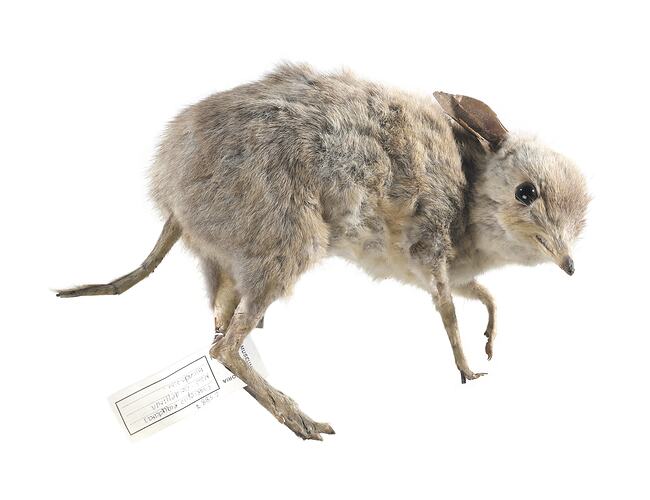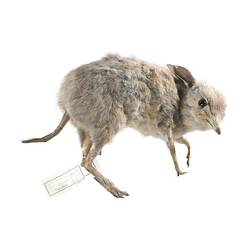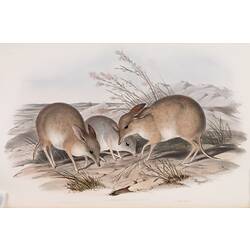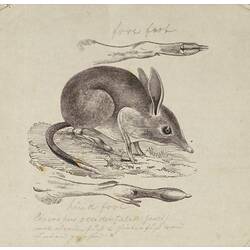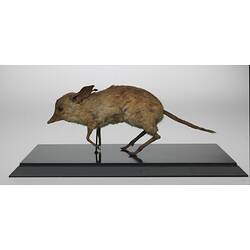General Description
Very small bandicoot with long slender legs that walks and runs using two toes on its front legs and one toe on its hind legs. Like other bandicoots they have a long head with long ears. Fur orange/brown above, light fawn below. Long tail with a crest of hair along the top. Body up to 26 cm long, tail up to 12 cm. Very similar to the Yirratji but with slightly shorter tail and hind legs.
Biology
The scientific name means pig-footed as they had front feet with two toes and hoof like claws resembling a pig. On the back feet, only one toe is used when running. The name 'Landwang' was used by Aboriginal people from southern New South Wales. Aboriginal people described it building a grass-lined nest and some say it dug a short, straight burrow with a nest at the end. The first specimen was collected in 1836 in Victoria, and happened to have lost its tail. The scientist assumed this was normal and named it ' ecaudatus' meaning tailless. In fact, the tail is one of the longest of any bandicoot. After European settlement, the population of the Landwang collapsed, probably as a result of the introduction of the feral Cat and introduced diseases. It is now presumed extinct. The Landwang is very similar to the Yirratji which occurred in central Australia.
Distribution
Semi-arid zones of New South Wales, Victoria, South Australia and Western Australia. Now extinct.
Habitat
Grasslands, open forest with shrub and grass understorey.
More Information
-
Animal Type
-
Animal SubType
-
Habitats
-
When Active
Nocturnal
-
Diet
Herbivore
-
Diet Categories
Grasses
-
Endemicity
-
Conservation Statuses
FFG Threatened List: Extinct, EPBC Act 1999: Extinct, IUCN Red List: Extinct
-
Taxon Name
-
Common Name
Landwang
-
Other Names
Pig-footed Bandicoot
-
Kingdom
-
Phylum
-
Subphylum
-
Class
-
Order
-
Family
-
Genus
-
Species Name
ecaudatus
